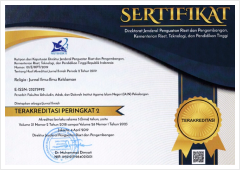The Concept of Basyar in the Qur'anic Perspective: a Humanistic Psychology Approach
DOI:
https://doi.org/10.28918/religia.v26i2.1137Keywords:
Humans, Bashar, Al-qur’an, Prophet, ExternalAbstract
Human in the Quranic perspective has many terms, one of them is Al-Basyar. The word Al-basyar refers to the appearance of something well and beautifully and comes from the word basyarah which means skin. This study aims to examine and explore the understanding of humans as Al-Basyar from the Quranic perspective. The method in this research uses qualitative methods. Analysis in this study uses content analysis and then primary data will be cross-checked with other secondary data. Result a). The word Basyar in the Qur'an is written 37 times meaning humans with details 31 times (without using Alif-Lam), 5 times (using Alif-Lam), and 1 time (without alif-lam in dual form). b). Al-basyar which discusses humans in general in the Qur'an there are 9 verses that explain that humans eat, have skin, have sexual intercourse, and can die (not eternal), and there are 5 verses that discuss the process of human creation which comes from soil, water and then the spirit is blown. c). In the Koran there are 23 verses that discuss prophets/prophethood, 13 of which discuss the people who lie and slander prophets, besides that there are also verses that discuss prophets as ordinary humans (basyar), this is contained in 10 verses in the Quran. d). In the humanistic psychology approach, humans as basyar are humans with physiological needs that must be met. These physiological needs are related to eating, drinking, sleeping, and sexual intercourse.














